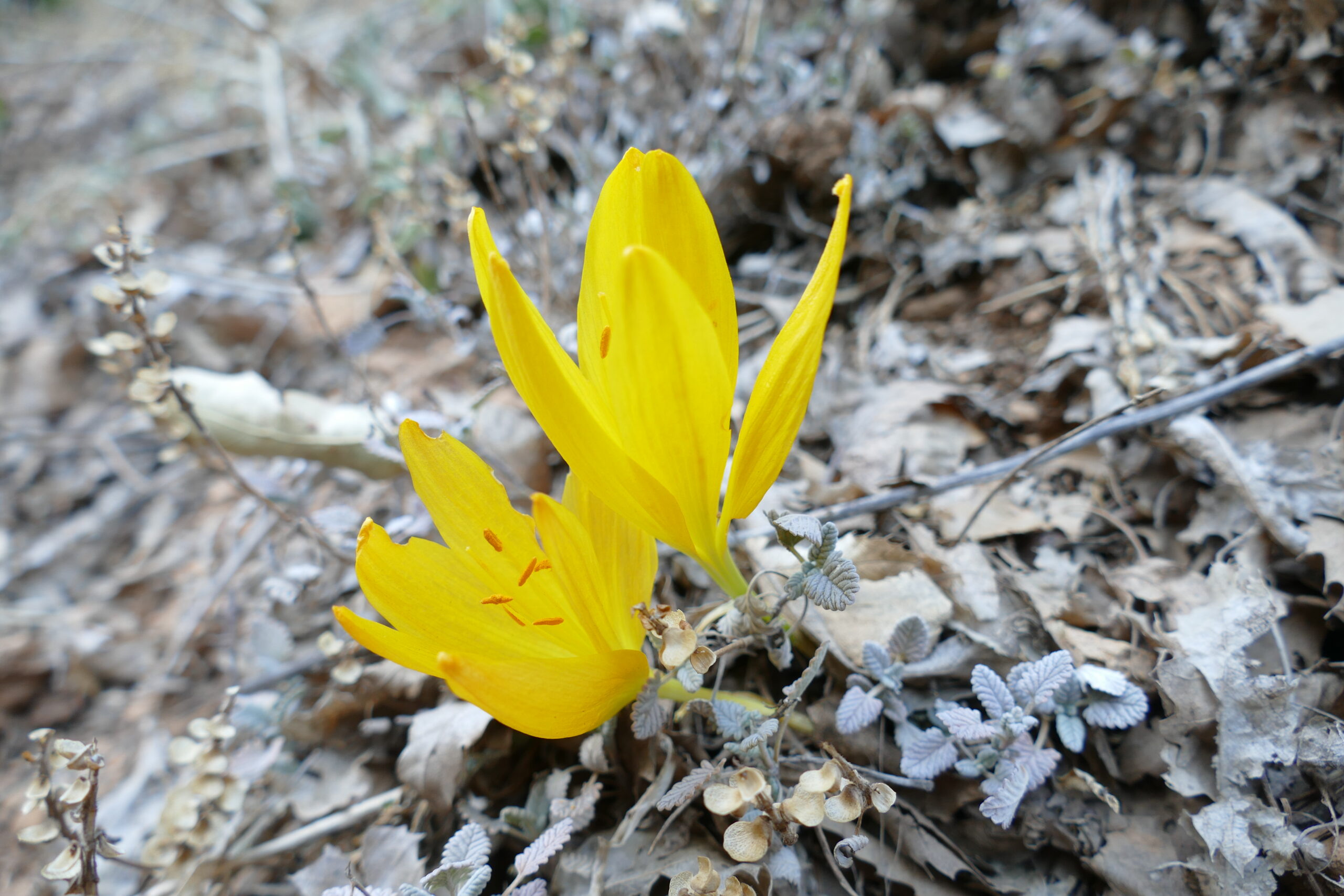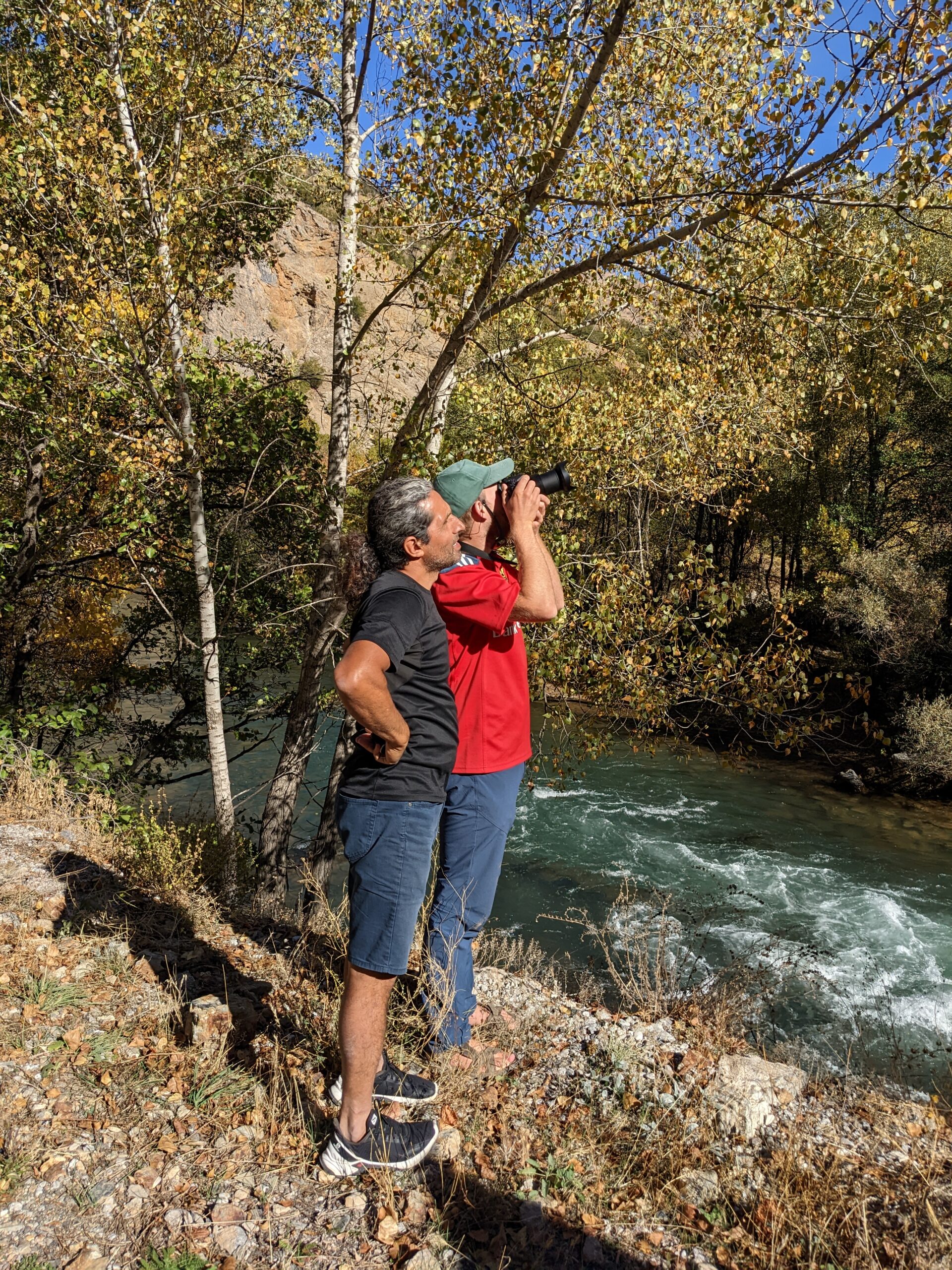The Munzur river cuts a deep valley through the high, rugged ridge of the Munzur mountain range, which is among the most scenic and biodiverse landscapes of Turkey. Composed of deep ravines and narrow gorges and known for its unique and diverse fauna and flora, the Munzur valley in the province of Tunceli was declared a national park in 1971. With about 420km2, it is the country’s largest national park, home to about 2000 plant species – 43 of which are locally endemic and 227 are endemic to Turkey – as well as many endangered animals.


Before travelling to Tunceli, we were alarmed that it is a conflict area. Some people have even advised us against going there. As we come closer to the province, we see several military checkpoints controlling the incoming traffic, including at the entrance of the Munzur valley itself.
As we arrive, we meet with Murat Özel, employee of the national park administration as well as Hüseyin Narin, local nature photographer. At this point, we have no idea yet about the depth and entanglements of the fight to protect the valley´s nature. We often write about examples of habitat loss or habitat destruction, when human activities destroy the natural habitats of wildlife. However, in the story of the Munzur valley, it is not only the home of wildlife that is at stake. While visiting the national park, we get to see some of its natural wonders, but what’s more, we hear about the history of grief and loss, blood, sweat and tears that is behind safeguarding it, as for the last decades, the people of Munzur – the Alevi Kurd minority – have been fighting to protect their home while being removed from it forcefully.

Our guides through Munzur valley: Hüseyin Narin on the left, and Murat Özel on the right.
The Munzur Valley National Park
Murat and Hüseyin take us on a tour along the whole length of the 40 km long valley from Tunceli to the Ovacik plain, following the meandering Munzur river upstream.



At Ovacik, the valley widens for a short distance, and what becomes a turbulent torrent downstream, turns into a smooth-flowing river, meandering through wet meadows filled with old birch and oak trees.
Downsteam, along the valley, the landscape shifts between mountains covered in autumn colours and steep and bare slopes.





The Munzur valley in full autumn bloom.
Murat knows the area like the palm of his hands, and points our attention to several endemic species of plants, such as the Allium tuncelianum, a species of wild onion. The endemic fish subspecies Munzur trout is common in the streams of the park. Several threatened birds, such as the Caspian snowcock, short-toed eagle, black stork, bearded vulture, Egyptian vulture and griffon vulture occupy the area, as well as many wolves, bears, wildcats and lynx. Chamois and bezoar ibex are also common inhabitants, and we have the chance to see a group of ibex returning to the slopes after a drink in the river.
While fishing is banned, hunting tourism has picked up in recent years, especially focusing on wild boar. Other species, including the bezoar ibex are forbidden to hunt, however, poaching is a serious issue the national park staff is trying to combat.
A personal path to conservation
It seems like Murat alone has the energy and passion of multiple people. He grew up in a village inside the valley and inherited a deep connection to nature from his family. For many years, he worked in the field of security, before his path led him to the national park. Not any kind of university, but the nature of Munzur valley and his own community have been his teachers. Through them, as well as in the course of joint time with several visiting experts that he accompanied on field excursions, he soaked up the knowledge about the valley like a sponge.
His passion for botany is obvious as he shows us some very unique species, but what’s more, he single-handedly aims to rescue injured wildlife and nurse them back to health. As he explains, wildlife veterinarians are not common in this region. With the lack of such expertise, Murat took upon himself to learn how to appropriately handle injured animals. Because of his good relationship with locals, he often receives calls when wildlife is injured, for example after road accidents or collisions with power lines. While being remotely guided and supervised by the one of the best Turkish wildlife veterinarians in Istanbul, he has managed to learn by doing and thus save the lives of many of the park’s animals. But where does his deep passion for protecting nature come from? To answer this, we have to learn more about Murat´s people, the human inhabitants of this region.
The fierce people of the Munzur valley
Most people who live in the Munzur Valley are part of a minority. They are ethnic Kurds in a majority-Turkish country, and Alevis in a majority Sunni Muslim population. Since even most Kurds are Sunni, the Alevi Kurds are a small minority – except in the region of Dersim that encompasses the Munzur valley, where they make up over 90% of the population. Furthermore, many people of Munzur valley speak a distinct, now endangered language called Zaza that comes specifically from this region.
Thanks to the rugged geography and resulting isolation of the Munzur valley, locals retained a deep cultural identity. They consider much of the natural and cultural heritage of the Munzur valley sacred. For them, the cliffs, trees, caves, streams, springs and forests dispersed throughout the valley are like small sanctuaries, inseparable from culture. And, they are determined to protect them.

Already during Ottoman times, this region of Dersim gained a reputation for being resistant to the ruling of the central authority, the sultan, and rather operating autonomously. Due to the rugged terrain of their homeland, they could keep this independence over time. Following the establishment of the Turkish Republic in 1923 led by Mustafa Kemal Atatürk, many Alevi Kurds had high hopes that the modernisation of the country and the introduction of secularism would reduce discrimination against Alevis.
However, Atatürk’s approach to unifying the country was to establish Turkish as the only legitimate ethnicity in the country, banning the usage of minority languages. He also prohibited Kurdish cultural practices such as wearing traditional outfits, reciting traditional Kurdish folktales, or engaging in other customs that reinforced Kurdish identity.
The people of Munzur have experienced two devastating tragedies in the past century. First was the Dersim rebellion in 1937-1938, during which thousands of people died, entire villages were destroyed by the army and many remaining Kurds were deported to other parts of the country. However, while the government tightened its grip on Dersim, it didn´t succeed in weakening the locals’ identity and their spirit of independence.
Starting around 1990, the PKK (Kurdistan Workers Party) guerillas had become active and started attacking Turkish military bases trying to win a greater autonomy for the Kurdish population. In this conflict time between the Turkish military and the PKK, over 2000 Kurdish villages were destroyed and its inhabitants forcefully removed by the military. Many people lost their homes and belongings. Locals, like Murat and his wife Ipek still vividly remember their village and leaving everything behind. However, most locals of Munzur valley mistrust the PKK, too, and don’t identify with its aim and methods. Nevertheless, simply because they are Kurds, they are often put in the same box as the guerillas of the PKK.
Among the many things Murat and Ipek told us during our wide-ranging conversation, one moment stands out:
“There is death, massacre, grief here. But we would rather die than give up our identity! We simply want to live in a country where all ethnicities, all languages and all religions are equally treated and tolerated.”
The a valley to be drowned in a series of dams and mines
In the case of the Munzur valley, the strong identity of the Alevi Kurds coupled with their painful history contributed to an exceptional level of political activism including environmental protection in this otherwise marginalised region, and this is where the ‘Campaign to Save Munzur’ started.

Since the 1980s, a network of 10 dams and 16 hydropower plants has been planned along the length of the river. Six of these plants were designated within the national park, completely ignoring the laws to protect its nature. Eventually in 2003 and 2009, two of the dams were completed. However, thanks to the lengthy protests of over 25000 people under the slogan “Munzur will flow freely!”, a landmark victory has been achieved and further plans within the borders of the national park have been cancelled by the court in 2014.
However, the threat continues, since as of 2022 several mining licences have also been given out over an area of 62,285 hectares, basically declaring the entire Munzur mountain range as a mining area. If the plans for mines and further dams are ultimately implemented, dozens of villages will be affected, rare ecosystems will be flooded and Alevi sacred sites will be destroyed, as scientists report. How could such an irreversible disaster be approved?
Resilient and open-hearted
Over the past 50 years, the Munzur Valley National Park has faced several threats. Its nature and people have been in the constant crosshairs of the government. Dam construction plans, deliberate forest burning by the Turkish army, the forced displacement of locals and the closing of entire villages have sent an alarming message to all the inhabitants of the Munzur valley. That is, within the realm of what their government calls “progress”, the protection of natural, cultural and ethnic diversity comes second to the insatiable appetite for infrastructure development.
While being in the Munzur valley and spending time with Murat, Ipek and Hüseyin, it is impossible not to feel a genuine kindness that persists between people and swallows us as well. Although few people speak English here, we could not feel more welcome. With its ruggedness, biodiversity and crystal clear water, the Munzur valley seems like a paradise on earth. As a result of the last decades of turmoil and the displacement of over 15,000 villagers, the number of people living in the district is half of what it was in the 1970s.
But the wild nature of the Munzur valley is inseparable from the people who safeguard it through their long-standing traditions. For them, the valley is a paradise on earth, and it is home.






Pingback: Quo vadis, Turkey’s nature? - biking4biodiversity.org